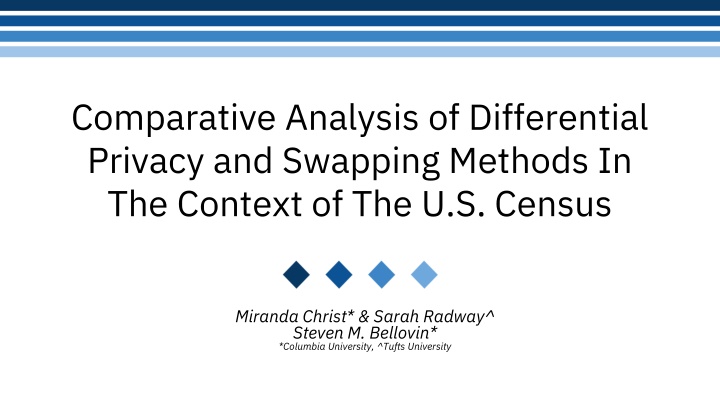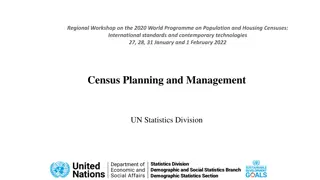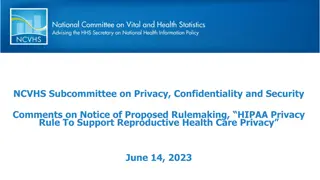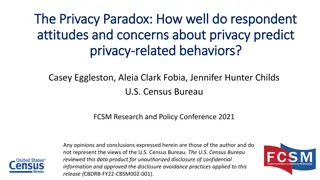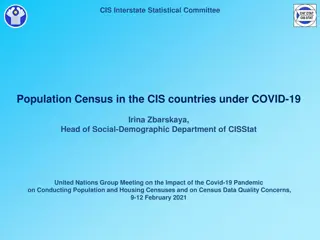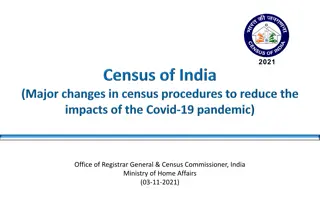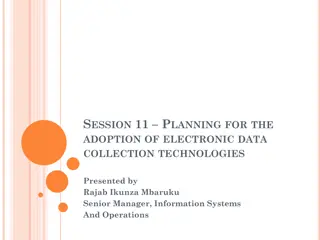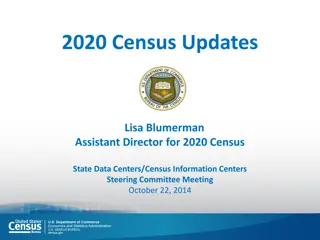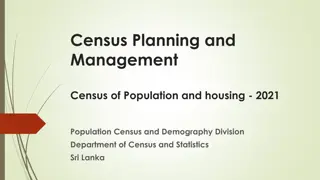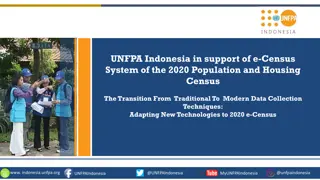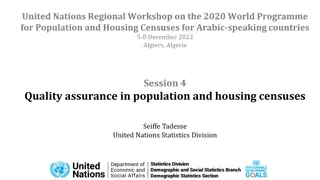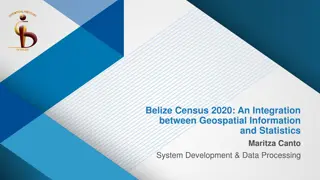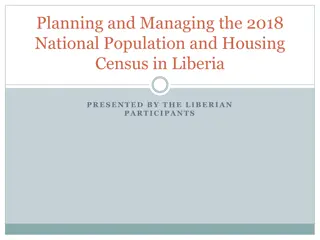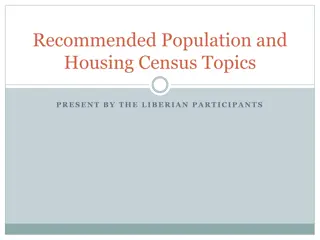Comparative Analysis of Privacy Methods in U.S. Census
This study delves into the comparison of differential privacy and swapping methods within the context of the U.S. Census, addressing the balance between data utility and privacy, controversies, theoretical results, and more.
Download Presentation

Please find below an Image/Link to download the presentation.
The content on the website is provided AS IS for your information and personal use only. It may not be sold, licensed, or shared on other websites without obtaining consent from the author.If you encounter any issues during the download, it is possible that the publisher has removed the file from their server.
You are allowed to download the files provided on this website for personal or commercial use, subject to the condition that they are used lawfully. All files are the property of their respective owners.
The content on the website is provided AS IS for your information and personal use only. It may not be sold, licensed, or shared on other websites without obtaining consent from the author.
E N D
Presentation Transcript
Comparative Analysis of Differential Privacy and Swapping Methods In The Context of The U.S. Census Miranda Christ* & Sarah Radway^ Steven M. Bellovin* *Columbia University, ^Tufts University
4 Background: Census U.S. Decennial Census: Demographic info collected every 10 years Data uses: redistricting, funding decisions (Medicaid, Head Start, SNAP, more ) Statutory Requirement (13 U.S.C. 9(a)(2)): Census data must not be personally identifiable Furthermore, lack of privacy may hurt participation and thus accuracy In 2010, data was de-identified using swapping In 2020, data was de-identified using differential privacy How can we balance data utility and privacy?
Swapping Exchange of data about individuals between groups, in order to de-identify Swap selection can be random or based upon a threshold of similarity swap rate: proportion of data to be swapped Prioritizes unique entries 5
6 Differential Privacy Add random noise (parametrized by ) to make dataset private Usually mean 0 noise, with variance depending on Privacy guarantee: changing one person s data only changes the de-identified data by a little bit A little bit depends on Lower : lower accuracy; higher privacy. Higher : higher accuracy; lower privacy Age range Sex Race Pop. count ... Pop. count 15-30 F White 126 ... 131 add noise 30-45 M Asian 89 ... 83
7 Controversy and Context Privacy Concerns Researchers reconstructed 46% of (swapped) 2010 census data Accuracy Concerns Effect of DP on minority groups and small towns National Congress of American Indians Utility of DP for redistricting (Alabama v. U.S. Dept of Commerce) Court case brought by Alabama arguing that DP-produced data is too inaccurate Privacy and Accuracy Concern: How should the epsilon value be chosen for the Census Bureau s DP implementation (TopDown Algorithm)?
8 Our Approach Two flavors of analysis: 1. Theory Analyze how we expect swapping to behave Not implementation dependent; results generalize beyond the U.S. census 2. Experiments Recreate census-like data and simulate their swapping and DP algorithms Compare the accuracy and privacy of DP and swapping
10 Theoretical Results For swapping: if a subpopulation differs more from global pop., then there is a higher expected error for counting queries This expected error increases further as swap rate increases Generally: smaller, more diverse subpopulations have exponentially more unique entries than larger or more homogeneous subpopulations higher expected error lower expected error
12 Synthetic Data Why do we need synthetic data? Census data releases de-identified query data, not true data How did we make our synthetic data? Used de-identified 2010 US Census block group data Fit true distribution for sex, age, household size & tenure Used exact de-identified data for race (to represent minorities effectively) Age Sex Race Household Size Household Tenure
13 Method & Metrics Method: Replications of Swapping and DP algorithms to the best of our ability Why? Swapping algorithm can t be disclosed, DP algorithm is too expensive Several implementations (swapping similarity thresholds & DP-buckets) of each algorithm for comprehensiveness Metrics: For minority and overall population representation Accuracy: two metrics that show minority and overall representation Privacy: Linkage attack with public dataset
15 DP Privacy Why is it hard to directly compare privacy of DP and swapping? DP: Provides privacy guarantee, can only learn about the group I know that most people with the zip code 10027 were white. Because your zip code is 10027, you are probably white. Swapping: Does not provide privacy guarantee I see that there is only one person with a zip code of 10027 in both datasets. Thus, if your zip code is 10027, this must be your data, and you must be white. Privacy attacks of this type fundamentally CANNOT WORK against DP
16 Breaking Down The Figures X-axes: de-identification mechanism metrics L R represents most least private Y-axis: represents accuracy (or privacy) Closer to 0 represents better accuracy (or privacy)
17 Privacy We simulate a linkage attack, matching entries from a de-identified database to a public database. We try to determine whether an individual has some attribute (e.g. is Hispanic) NOT DIVERSE COUNTY DIVERSE COUNTY
18 Privacy MINORITY POPULATION TOTAL POPULATION
19 Accuracy MEAN SQUARED ERROR (MSE) Considers total population MU-SMOOTHED KL-DIVERGENCE ( -KL) Weighs minority populations; see Cummings et al.
20 Accuracy NOT DIVERSE COUNTY ( -KL) DIVERSE COUNTY ( -KL)
21 Privacy & Accuracy For swapping, good privacy means poor accuracy, especially for diverse counties. DP, however, performs better across varying diversity levels.
22 Sarah Radway, sarah.radway@tufts.edu Miranda Christ, mchrist@cs.columbia.edu Final Remarks While both swapping & DP mechanisms could produce comparable accuracy: Swapping mechanisms: Posed a significant risk of re-identification No privacy guarantee: bad utility != good privacy, and vice versa Diverse groups suffered worse accuracy AND privacy, disproportionately impacting minorities Differentially private mechanisms: Provide a direct relationship/guarantee between utility and privacy Performed consistently across groups of varying diversity
